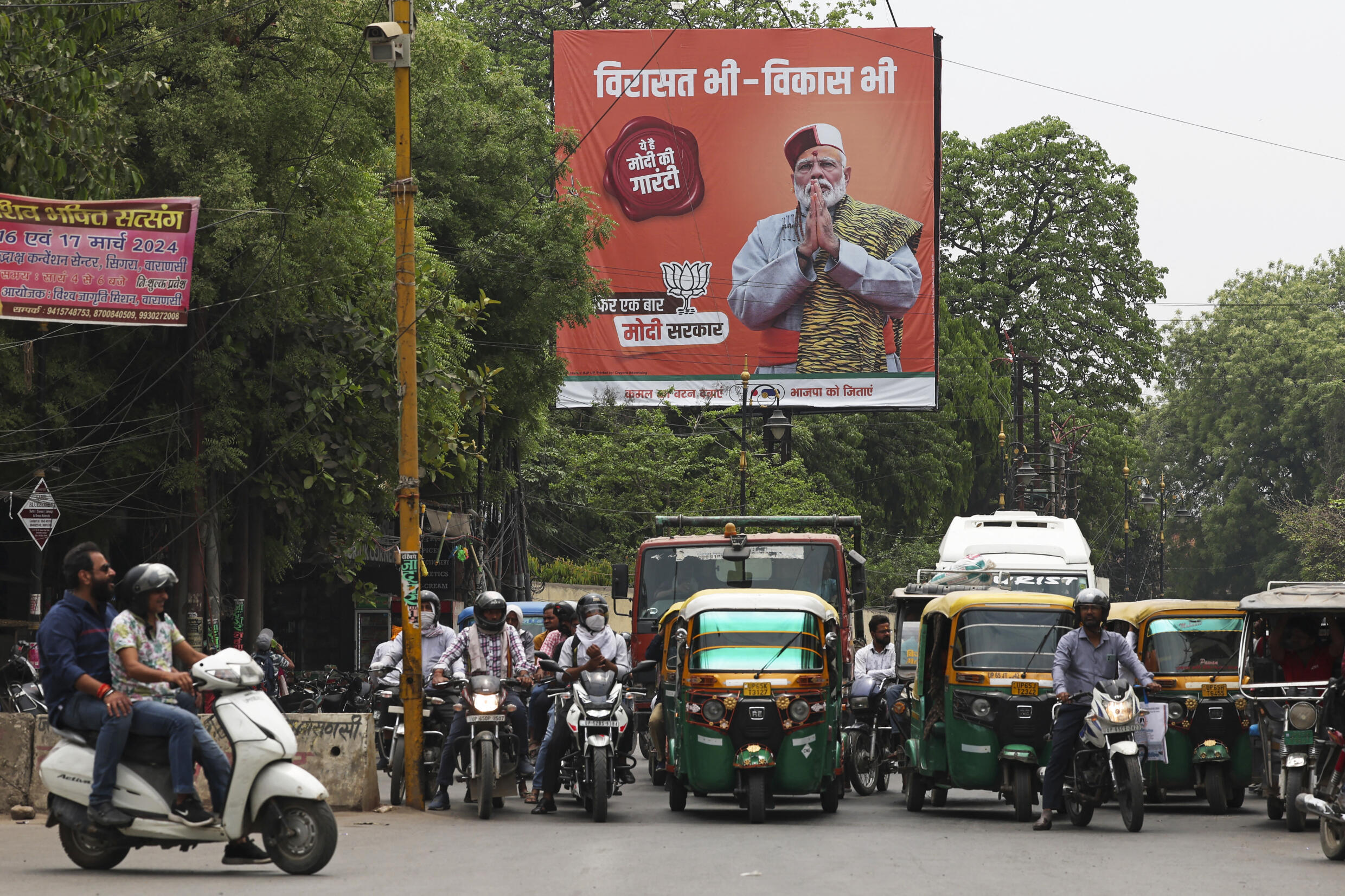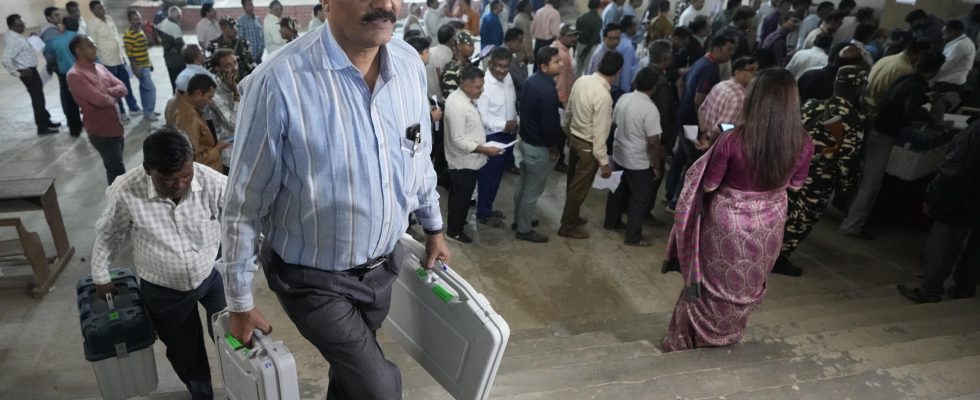2024 rhymes in India with the election. “The largest democracy in the world” renews its Parliament. The poll which begins on April 19 will be spread over six weeks, and will take place in seven phases, with the declaration of results scheduled for June 4. 970 million people are called to the polls to choose the 545 deputies who will sit for five years in the lower house of Parliament. The logistics put in place by the Indian Election Commission are dizzying: 1.2 million polling stations, 2 million electronic voting machines, 12 million civil servants mobilized… It’s dizzying.
Every five years, are held in India extraordinary legislative elections. The 2024 election year will be no exception to the rule, especially since this country is a demographic giant. Since last year, India has become the world’s most populous nation, having now overtaken China with more than 1.4 billion people.
It was in 1951 that the first Indian legislative elections took place, mobilizing some 170 million voters. The 18th edition of the vote will take place from April 19 to June 3, with 970 million men and women registered on the electoral registers. The ballot will be staged in 5 phases. A real electoral marathon, the results of which will be known on June 4.
The logistics put in place by the Indian state are commensurate with the challenge: 1.2 million polling stations will be installed across the country where 2 million electronic voting machines will be transported, all under the supervision of 15 millions of civil servants mobilized for the occasion. Let us also remember that Indians are passionate about elections. They vote en masse, queuing if necessary for hours in front of the polling stations under the scorching sun. The participation rate has continued to increase, going from 45.7% in the first legislative elections in 1951 to 67.1% in the legislative elections of 2019. The organization of the elections is ensured by the Indian Election Commission.
A Federal Republic
With an area of 3.3 million km2, India is among the ten largest states in the world. Almost as large as the European Union, it is organized into a federation of 29 states, six of which are called Union Territories, governed directly by the central state. The first level of governance of these subsets is local, with regional parliaments elected by universal suffrage and provincial governments with specific legal, security, economic and educational skills. The 29 states are also represented, in proportion to their population, in the Federal Parliament in New Delhi, the country’s capital.
The seat of legislative power, the Federal Parliament in New Delhi is a bicameral institution. It is composed of a Lower House, called in Hindi the “ Lok Sabha ” or People’s Assembly, with 543 deputies elected by universal suffrage, plus 2 appointed by the President of the Republic, and an Upper House, the ” Rajya Sabha » or Assembly of States. The latter has 233 members appointed by indirect suffrage by the legislative assemblies of the federated states. Equivalent to French senators, they are elected for six years and the Rajya Sabha is renewed by thirds every two years. The Indian Upper House has legislative power equal to that of the Lower House, except in matters of finance where the latter has ultimate authority.
“Festival of democracy”
Designated a “festival of democracy” by the Indian Prime Minister Narendra Modi, the legislative elections constitute a crucial moment in Indian political life. The election season begins with the dissolution of Parliament and the opening of the campaign. The rules for campaigning are laid down by the Electoral Commission which has the power to cancel the candidacies of recalcitrants. The fact remains that the campaign can be violent, sometimes deadly.

Who votes? In accordance with the rule of “ one man, one vote » enshrined in the Constitution, all Indians aged 18 on January 1 of the year of the election have the right to vote. In 2019, the country had some 900 million voters. This year, 70 million additional voters are likely to slip a ballot into the ballot box.
The deputies are thus elected by direct universal suffrage in a single-member ballot, according to the British model of “ first past the post “. To obtain a majority, the one with the highest number of votes is elected. The majority is set at 272 seats. The Prime Minister who is the strong man of the regime comes from the majority party or coalition. He is appointed by the Head of State who is elected indirectly by an electoral college bringing together the members of the two Chambers but also those of the Legislative Assemblies of the federated States. In the Indian political system, the powers of the President of the Republic are subordinate to the authority of the Prime Minister.
8,000 candidates for deputy
During the last legislative elections held in 2019, 8,000 candidates competed for deputy under the labels of several hundred parties. Nearly 2,300 political parties are registered, but only seven are recognized at the national level and 59 at the state level.
It is a center-right coalition, the National Democratic Alliance (NLD), with the main component being the Bharatiya Janata Party (BJP) professing radical Hindu nationalism, which won the 2019 poll with 353 seats. The BJP, led by the very popular outgoing Prime Minister Narendra Modi, managed to win 303 seats alone, 31 more than the absolute majority.
Opposite, the Congress party, which has long dominated Indian political life under the aegis of the Nehru-Gandhi family, obtained 52 seats. A slight improvement compared to its tiny score of 44 MPs in 2014.
The challenges of 2024
Five years after the last legislative elections, the balance of power between the parties involved has not changed much. In the legislative elections of April-June 2024, the BJP of outgoing Prime Minister Narendra Modi and the Congress will face each other again. Observers put the Prime Minister’s party in pole position, while the Congress at the head of a coalition bringing together the main opposition parties seems to be struggling to take off in opinion polls.
In power for 10 years, the Prime Minister remains extremely popular. If we are to believe the polls, Indians seem to continue to trust him, despite his disastrous management of Covid which would have caused between 3.2 and 3.7 million deaths according to studies denounced by the Indian Ministry of Health . The Modi government’s economic record is not very good, as evidenced by the unemployment which massively affects young people according to World Bank figures, and the galloping inflation which the Indian government is struggling to control.
Even more serious is the threat posed by the government of Narendra Modi to Indian-style secularism, enshrined in the Constitution. Coming from a Hindu supremacist movement, the Indian Prime Minister is suspected of wanting to change the Constitution to transform the country into a Hindu theocracy, where minorities will be marginalized, particularly Muslims. According to Ashutosh Varshney, researcher at Brown University, cited by The Guardian, “ If Modi returns to power we can imagine a Jim Crow scenario in the federal states governed by the BJP. It will be the triumph of Hindu “majoritarianism”, with the consequences of the relegation of Muslims to the rank of second-class citizens and in the long term the loss of their nationality. ».
These rather gloomy prospects explain why the electoral “festival” this year will have a bitter taste for many Indians.
